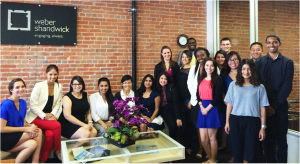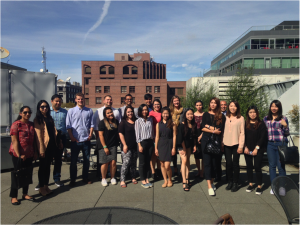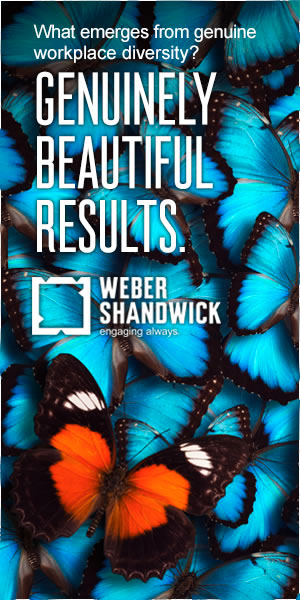When she tried to break into the world of PR and agency life, Danielle Calhoun initially faced a few challenges. “I’m the first generation in my family to go to college, I’m Latina, and I didn’t know anyone in the professional space who could help—someone who could tell me, ‘This is how the world works, here’s how to get your foot in the door, and here’s how to shine once you get there,’” says Calhoun, who’s currently Digital Director for Weber Shandwick in the agency’s San Francisco office.
But some key opportunities and mentors—particularly through the Los Angeles-based LAGRANT Foundation, a non-profit that supports minorities majoring in advertising, PR, and marketing, and which first introduced Calhoun to Weber Shandwick—gave her the guidance and direction she needed to get her career underway.

Today, Calhoun has been with the company for three years, and in addition to working with such clients as Nokia and QualComm, she also focuses on helping future members of the industry get ahead. Calhoun oversees Weber Shandwick’s internship program for the San Francisco Bay Area and partners with several local groups to advise first generation college students and high school students in underserved areas about how to prepare for careers in PR and advertising, from tips for building their resumes to advice on getting a face-to-face meeting.
Noting how common it is for people in the industry to help others break in by making personal introductions, Calhoun says, “I realized if you don’t come from a family of professionals and either already know someone in the industry or related industries, and don’t know it’s okay to get those introductions—or even have access to those introductions—you don’t have a clue that that exists.”
Calhoun has hosted several career workshops through an ongoing partnership with The LAGRANT Foundation. She volunteers with Students Rising Above, a non-profit that supports low-income, first generation college students and mentors them through high school, college and getting a career. This fall she also served as a guest speaker at a local charter school where she can help students envision and prepare themselves for a career in the industry. Beyond working with high school students, she’s also set her sights on developing a more immediate pipeline for the internship program.
“A lot of my partnerships are focused on students who haven’t yet graduated, so now I’m planting seeds so that when they graduate, Weber is the place they want to work,” Calhoun says, noting she’s meeting with more student groups and universities.

If Calhoun seems especially keen on contributing to her company’s diversity and inclusion efforts, it’s because Weber Shandwick’s commitment to the space is what made her want to work there. “I first learned of Weber Shandwick when I was in graduate school, after winning a scholarship from The LAGRANT Foundation,” she says. “[Weber Shandwick President] Gail Heimann is on their board of directors, and after I learned more about the company and their commitment to having diverse employees at all levels, I remember thinking, ‘That’s the company I want to work for when I graduate.’”
In her enthusiasm to grow the internship program for her office, she’s involved more colleagues, creating a committee that allows staff to participate in tasks that most appeal to them, whether reviewing resumes or setting up recruiting events. “I’ve seen really good feedback and a good response,” Calhoun says. “People want to get involved but sometimes don’t know how; but with the internship program, you can see immediately that your work has paid off.”
In the end, it turns out that the challenges Calhoun faced in creating her career made her perfectly positioned for cultivating talent once she was inside the industry—especially in the areas of diversity and inclusion. “One thing I love with these partnerships is that I end each session telling the students to keep in touch, and what does that mean, how does it look,” Calhoun says. “And I always tell them, ‘Think of me as that person you know in the industry and keep in touch—I’m the person you now have on the inside.’”

